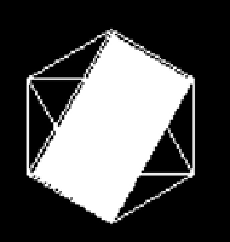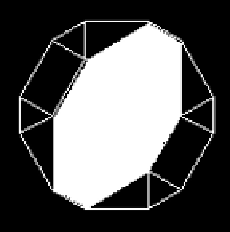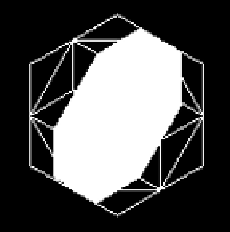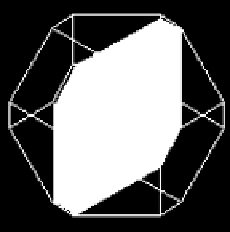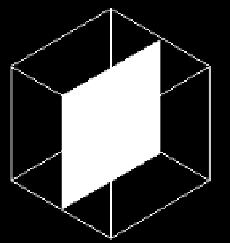Image Processing Reference
In-Depth Information
(a)
(b)
(c)
(d)
(e)
(f)
FIGURE 6.22: Intersections of digital spheres with a plane for octagonal
metrics: (a) {1}, (b) {12}, (c) {112}, (d) {113}, (e) {122}, and (f) {3}.
Reprinted from
Pattern Recognition Letters
, 21(2000), J. Mukherjee et al., Fast Computation of Cross-Sections of
3-D Objects from Their Medial Axis Transforms, 605-613, Copyright (2000), with permission from Elsevier.
6.6.1 Computation with MAT
Like geometric transformation, computation with a MAT of a 3-D object
could be carried out by computing the intersection of the given plane with
individual medial spheres. The union of all these intersections would result in
forming the cross-section along that plane. As the digital spheres are convex
polytopes, the intersections with a plane form a convex polygon. The vertices
of these polygons are the intersecting points of edges of the polyhedra with the
plane. In Fig. 6.22, typical examples of these intersections of digital spheres
of different octagonal metrics with a plane are shown. Once the intersecting
points with edges of the polyhedra are computed, the convex polygon could be
obtained by carrying out Graham's scan [169] through them. In this scan, the
vertices are angularly sorted to provide a star polygon [169], which is convex
in this context.






